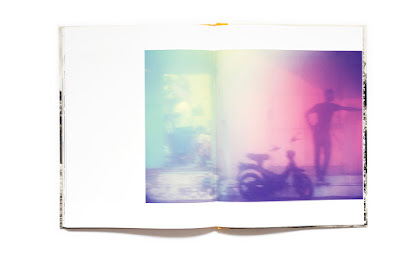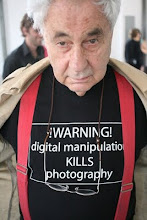About Ben Krewinkel
Ben Krewinkel (1975) studied modern African history in Amsterdam and Pretoria and Photographic Studies in Leiden. He also finished the FotoAcademie (cum laude) in Amsterdam.
Ben Krewinkel teaches photography at the School of Journalism in Utrecht and at the Royal Academy of Art in The Hague. He also works as a curator and writes on photography, mainly photobooks.
In 2012 his first photobook A Possible Life. Conversations with Gualbert. was published. Currently he is working on the follow-up of A Possible Life. The title of the forthcoming book is Il m'a sauvé (He saved me).
Ben is the main editor of Africa in the Photobook, a website about the changing visual representation of Africa as expressed through the medium of the photobook.
See also
Africa in the PhotoBook A selection of rare photobooks by Irène Attinger Oumar Ly Photography
Seydou Keïta – Seydou Keïta (Les éditions Rmn-Grand Palais, 2016)
How did you start collecting photobooks about Africa?
I have always been attracted to photographic illustrations in history books, while studying history in Amsterdam and Pretoria. Before that, I used to read books from my father’s small photobook collection, which I loved. As a child I was utterly fascinated by the book Sahel by Dutch photographer Willem Diepraam and Black Child by South African photographer Peter Magubane. Around the time when Martin Parr and Gerry Badger published The Photobook: A History Volume I, I started collecting photobooks seriously. Since 2014, I have been focusing on photobooks dealing with African countries, regions or subjects.
How do you keep the collection growing?
Well, that is a tricky question. Collecting photobooks is an expensive occupation, especially when the books you buy come from abroad. Luckily enough, the African continent is not so explored by authors like Parr and Badger, so prizes of these books are still quite reasonable. Some of the books from Africa mentioned by Parr and Badger attracted photobook dealers and their value has now increased. There are books such as Resistencia Popular Generalizada from 1977 and The Afronauts by Cristina de Middel which already have higher prices, although De Middel’s book was virtually unattainable before it was included in The Photobook, A history volume III.
I keep on searching the internet for old books. Recently a collector of propaganda books approached me and made me aware of many books I never heard from. So he gets all the credits for the beautiful books Côte D‘Ivoire and El Djazaïr that are now in my collection. Recent publications are easy to find, but I only buy some, since I now focus mainly on books published before the 1990s. Also, I’m really happy when some publishers and photographers send me books for the website. If I like the books, I also try to interview the photographers of those books.
We have seen major collections of books about photobooks (Latin-American, Chinese, Swiss, Dutch, etc). I was surprised to see a digital platform. How did you come up with the idea?
First of all, I’d like to say that we owe a lot to Martin Parr and Gerry Badger and many other authors who published books about photobooks. They did a great job. I also would love to make a publication on ‘African’ photobooks, but I would never do this without the help of other authors who have the expertise. It takes a lot of research and course subsidies to produce books like The Latin American Photobook or The Chinese Photobook. I hope I’ll be able to produce a book in the future, but I didn’t want to wait until I got the finances to share the collection. Another thing, which I think is even more important, is making books freely accessible to as many people as possible. The website is a perfect platform where, for instance, students can take a look at some book spreads. When a book is really rare, I try to show more spreads. People can also engage with each other and discuss the books through the website and the Facebook page. I met many people who are really interested in my work online and they do often help me out when I have questions about certain books.
Peter Obe – Nigeria. Decade of crises in pictures (Times Press Limited, 1971)
Emmanuelle Andrianjafy – Nothing’s in Vain (MACK, 2017)
Where is the library based? Are photobooks available for consultation or loan?
Almost all the books on the website are from my private collection which is based in Haarlem, the Netherlands. If not, it is stated where the books are from. Unfortunately the books are not available for loan since I’m not an institute. But people are welcome to come and see the collection, and read the books. I have had visitors who came for studying specific books.
What’s your favourite find so far or can you name a recent photobook about Africa you particularly loved?
My all-time favourite find is Resistencia Popular Generalizada which I bought many years ago when I was still studying history. A more recent great find is Album De Familia which a Spanish friend sent me. It is a very interesting propaganda book made in the 1950s for a Spanish audience. Another recent publication I particularly love is Commonplace that contains photographs from two family collections. The makers Tamsyn Adams and Sophie Feyder and the publisher Fourthwall Books did a great job. I also like Nothing’s In Vain by photographer Emmanuelle Andrianjafy.
I think African artists could and should be more visible in the western photography world. Since the 1990s, there have been more and more African artists showing their work in Europe but we often see the same names.
In this collection a lot of books deal with historical documentation, reporting about a specific time and country. Would you like to give us a few examples?
The one I like most is the book Kenyatta by the British Anthony Howarth. It is a photographic biography of Jomo Kenyatta that includes photos by Howarth, but also archival material and paper clippings. It was published in Nairobi in 1967 and is visually stunning. Kenyan photographer Mohammed Amin also produced a book on Kenyatta, called Mzee, but the production of Howarth’s book is better. A more recent collection of books is the project named Ebifananyi by Andrea Stultiens. She published eight volumes each containing an historical photo collection from Uganda. This project is very clever and deals with so many different aspects of photography and Africa.
Are you planning to expand the collection to include more books by black African photographers?
The more African photographers, the better. Most of the collection is made up of books made in Europe. Even many photobooks produced in African countries, shortly after their independence, contain photographs made by European photographers. This is also the reason why the website is called Africa in the Photobook and not African Photobooks.
Unknown – Resistencia Popular Generalizada (Ministério da Informação da República Popular de Angola, 1976/77)
John Kiyaya – Tanzania Photographer and People of Lake Tanganyika (Mkuki na Nyota Publishers Ltd., 2013)
What are your thoughts on the lack of visibility of black African artists in the Western art/photography world?
I think African artists could and should be more visible in the western photography world. Since the 1990s, there have been more and more African artists showing their work in Europe but we often see the same names. I guess that when the work is good it should be showed, the background of the artist actually doesn’t matter to me. I also have to say that I’m not well informed about the art world and I guess many artists from Western countries have more opportunities than artists from the African continent, but that actually happens in other fields too. Talking about photobooks, I would love to see more books produced by African artists. I think the publisher Fourthwall Books is doing a good job producing books from African artists.
As a photographer I published two books dealing with the African continent. One was A Possible Life that is about the life of a friend of mine from Niger. We are working on a follow-up right now. The other is Looking For M, that contains photographs from Mozambique made by a Dutch photojournalist in the 1970s and more recent photographs by myself. Both books also deal with the depiction of the continent by Western photographers. Again, I would love to see a publication dealing with photobooks from and about Africa. A book like that, in my opinion, would need essays by experts about specific themes these books are dealing with. I would also ask these experts which books should be included. The collection on the website could be a good starting point.
africainthephotobook.com
Interview by Giada De Agostinis / Published 4 October 2017



















































Geen opmerkingen:
Een reactie posten